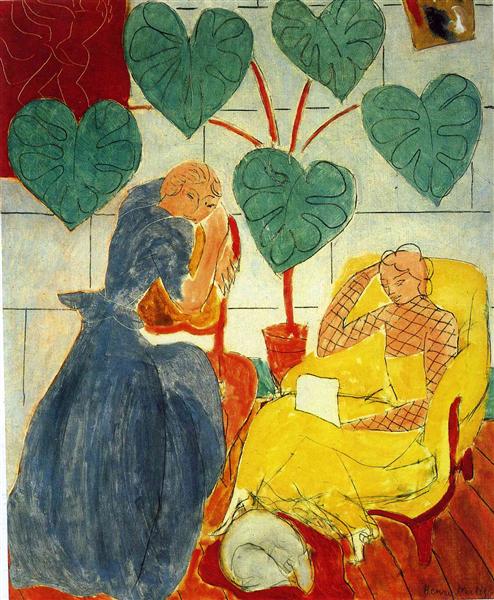Description
Henri Matisse, one of the most influential exponents of modern art, left us a prodigious collection of works that encapsulate the essence of Fauvism and the emotional depth of his creative spirit. His painting "The Conservatory" from 1938, measuring 50x60, is a compelling display of his skills and artistic sensitivity, although it is not as widely known as some of his other creations. Throughout his long career, Matisse was distinguished by his bold use of color and form, qualities that are clearly represented in this work.
The composition of "The Conservatory" is characterized, like many other works by Matisse, by the use of fluid lines and vibrant colors. Although we do not have a clear image of "The Conservatory" specifically, observing similar works created by the master in the same period, such as "Two Women" from 1939, allows us to infer some of the techniques and themes addressed by the artist during that period of his career.
In "Two Women", Matisse manages to capture the intimacy and serenity of his characters through a palette of soft colors and defined but delicate lines. The scene is centered on two women situated in a domestic environment, probably a garden or terrace, which could be thematically linked to "The Conservatory", suggesting an equally private and natural space. The silent communication between the characters in "Two Women" suggests a similar exploration in "The Conservatory", where the atmosphere could be one of reflection and tranquility.
The use of color is one of the most significant aspects of Matisse's work. In his art, colors not only delineate forms but also create an emotional perception that varies between calm and vibrancy. The tones used in "Two Women", which include soft greens, pinks, and browns, generate a sense of harmony; that same chromatic approach could be expected in "The Conservatory", given the artist's interest in representing the beauty and serenity of internal and external spaces in a congruent manner.
Matisse was also a master in the simplification of forms. In "Two Women", the figures and the environment are stylized in a way that eliminates superfluous details but without losing their essence and character. This technique of reduction alludes to his interest in capturing the inner truth of his subjects rather than their mere detailed physical representation. "The Conservatory" presumably follows this same logic, where, through the reduction of forms and the intensification of colors, he seeks to convey a pure and emotional idea.
Although we do not have direct access to all the specific details of "The Conservatory", understanding Matisse's artistic context and analyzing contemporary works offers a valuable insight to appreciate the painting. The dedication to intimate spaces, the treatment of color and forms, as well as the evocation of a tranquil and contemplative atmosphere, are distinctive characteristics of Matisse that we can assume are present in the work "The Conservatory". Ultimately, this painting should be seen as an extension of Matisse's tireless desire to explore and capture the essence of serenity and beauty through his unique artistic lenses.

